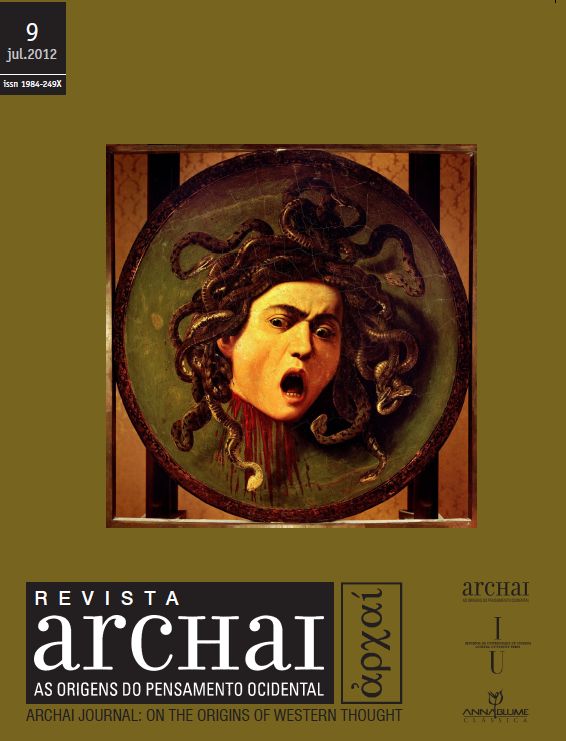O tema da raiva na Retórica e na Ética de Aristóteles
Keywords:
Tripartição da alma, thumos (thymos), thumoeides (thymoeides), boulêsis, orgêAbstract
Em breve “diálogo” com dois textos do Prof. John Cooper, este artigo trata um aspecto particular da relação entre os tratamentos da “alma”, principalmente, no Livro IV da República de Platão; e por Aristóteles no De anima, na Retórica e nos tratados éticos. Para Platão, a alma humana representa a combinação de três elementos, partes ou fatores - logistikon, thumoeides, epithumêtikon -, comparáveis a um homem, um leão e um monstro e respectivamente associados a ações causadas pela razão, pelo “thumos” ou por nossos apetites. A tripartição é uma ideia dominante pelo menos em contextos relacionados à psicologia moral e à explicação da ação nos diálogos platônicos a partir da República. Não há grande interesse de Aristóteles pelas “partes” da alma, mas pelo menos no contexto ético há alguma tendência a dividir a alma, se bem que apenas por analogia, e divide frequentemente o desejo em três subtipos - boulêsis, thumos e epithumia. Contudo, naqueles textos aristotélicos que se preocupam mais diretamente com a psicologia moral, isto é, os tratados éticos e a Retórica, o que realmente mais chama a atenção é, acima de tudo, a ausência da tripartição da alma. Para Aristóteles, não há muita utilidade para qualquer ideia de “partes” da alma no sentido platônico.Downloads
Downloads
Published
How to Cite
Issue
Section
License
Given the public access policy of the journal, the use of the published texts is free, with the obligation of recognizing the original authorship and the first publication in this journal. The authors of the published contributions are entirely and exclusively responsible for their contents.
1. The authors authorize the publication of the article in this journal.
2. The authors guarantee that the contribution is original, and take full responsibility for its content in case of impugnation by third parties.
3. The authors guarantee that the contribution is not under evaluation in another journal.
4. The authors keep the copyright and convey to the journal the right of first publication, the work being licensed under a Creative Commons Attribution License-BY.
5. The authors are allowed and stimulated to publicize and distribute their work on-line after the publication in the journal.
6. The authors of the approved works authorize the journal to distribute their content, after publication, for reproduction in content indexes, virtual libraries and similars.
7. The editors reserve the right to make adjustments to the text and to adequate the article to the editorial rules of the journal.



